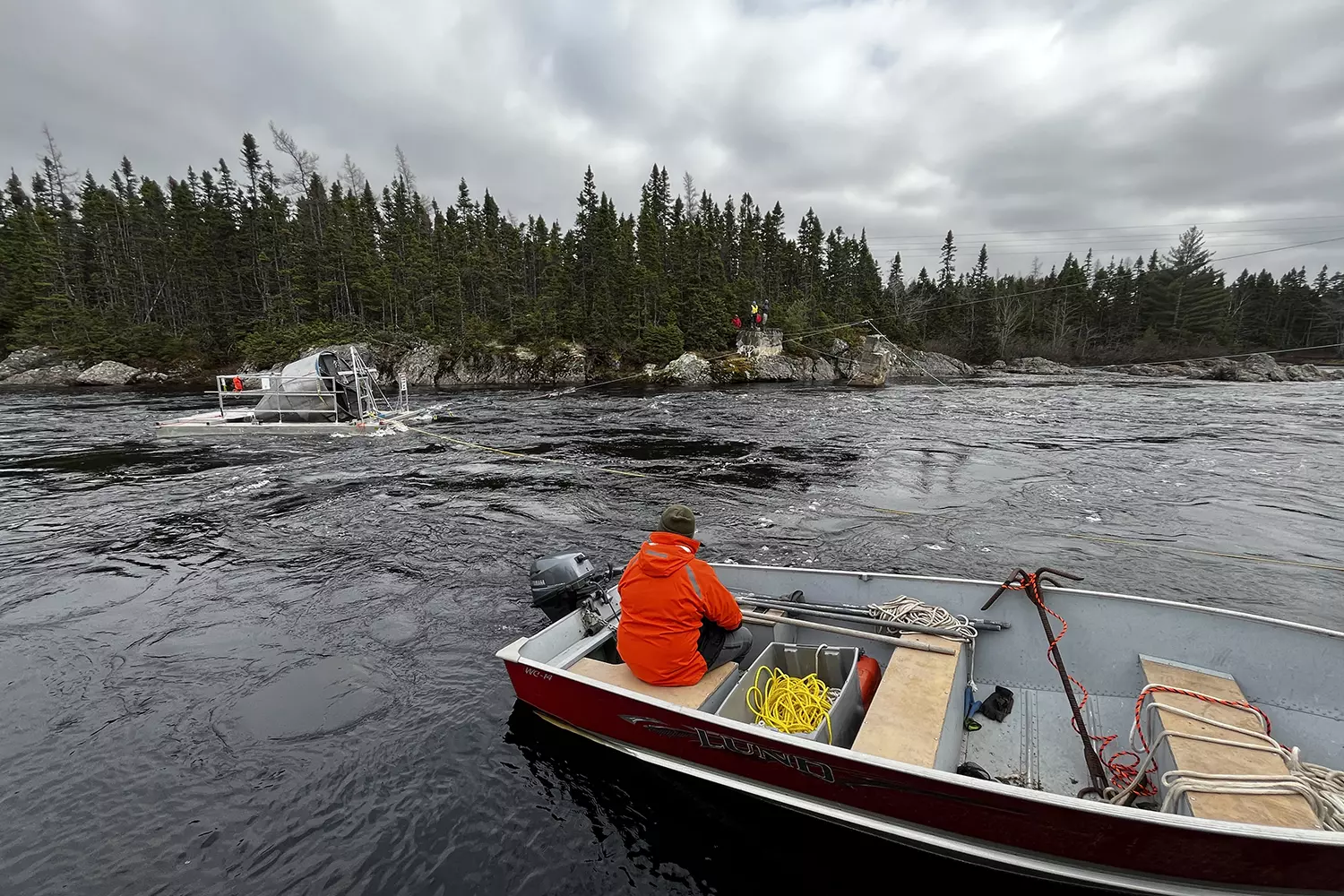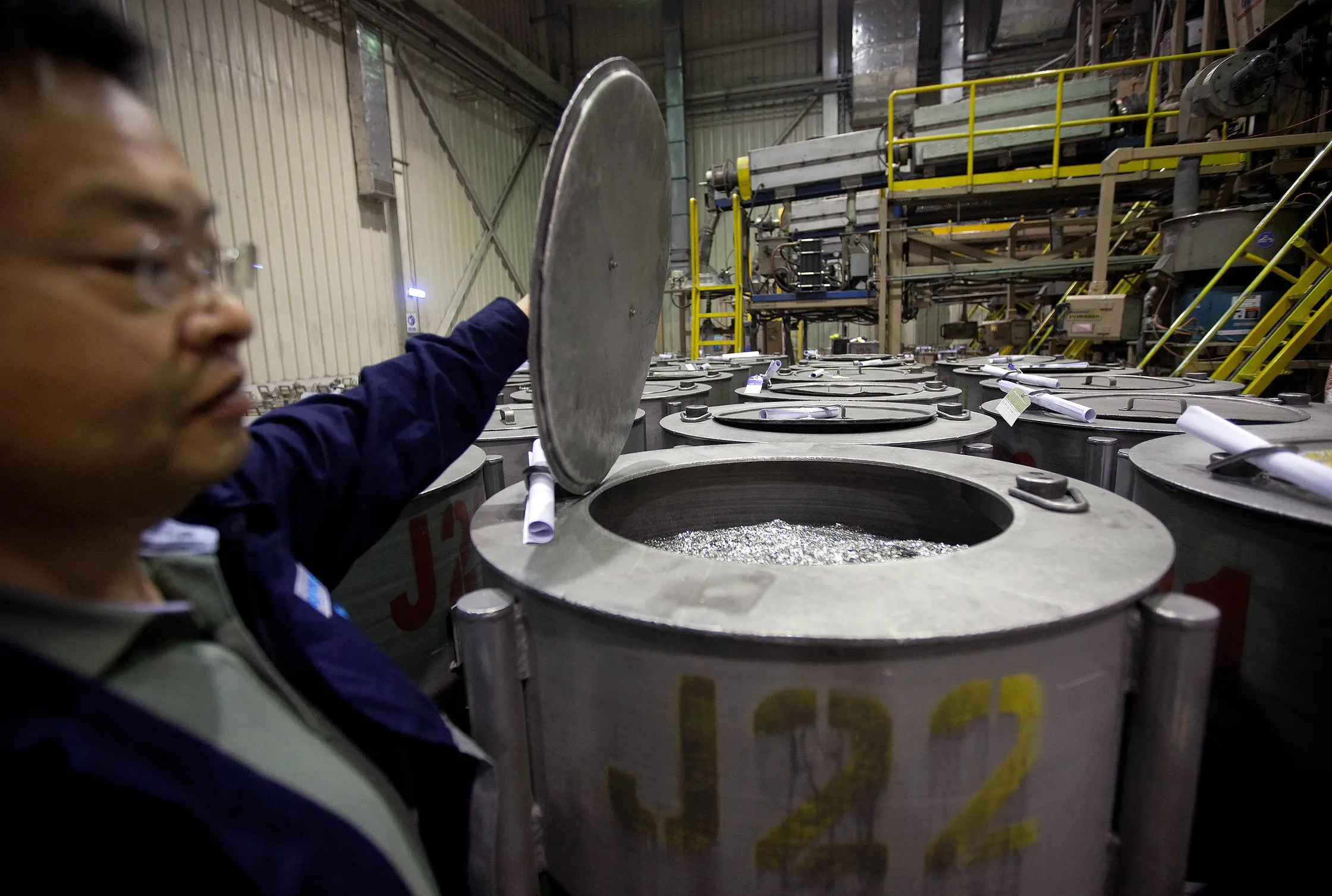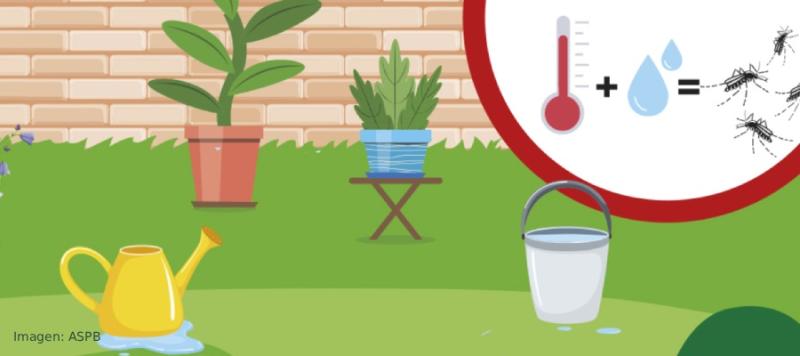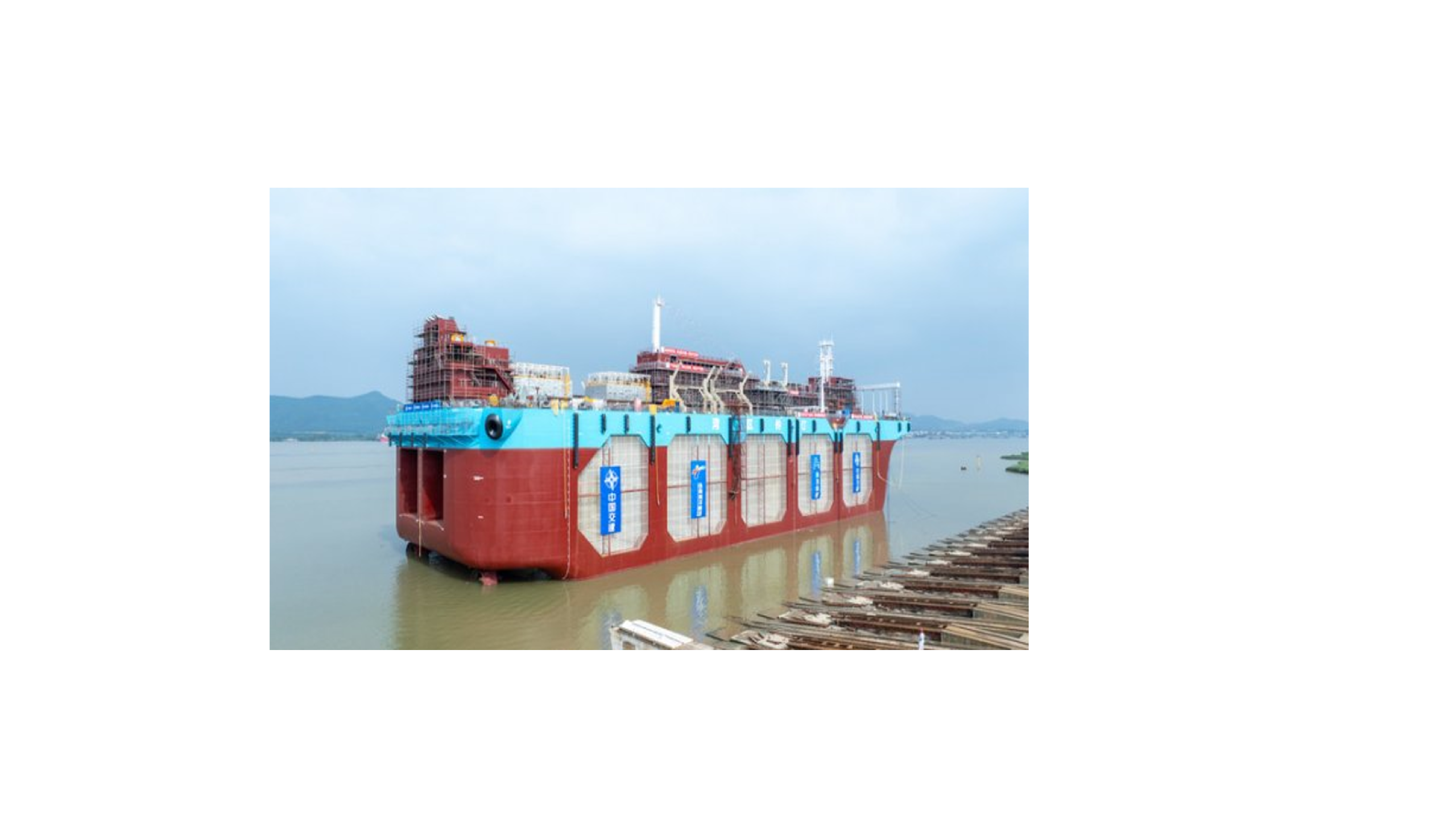![]()
31 March 2025Bonnie Waycott
Device helps scientists in Canada monitor salmon migration, evaluate river conditions and inform conservation policy
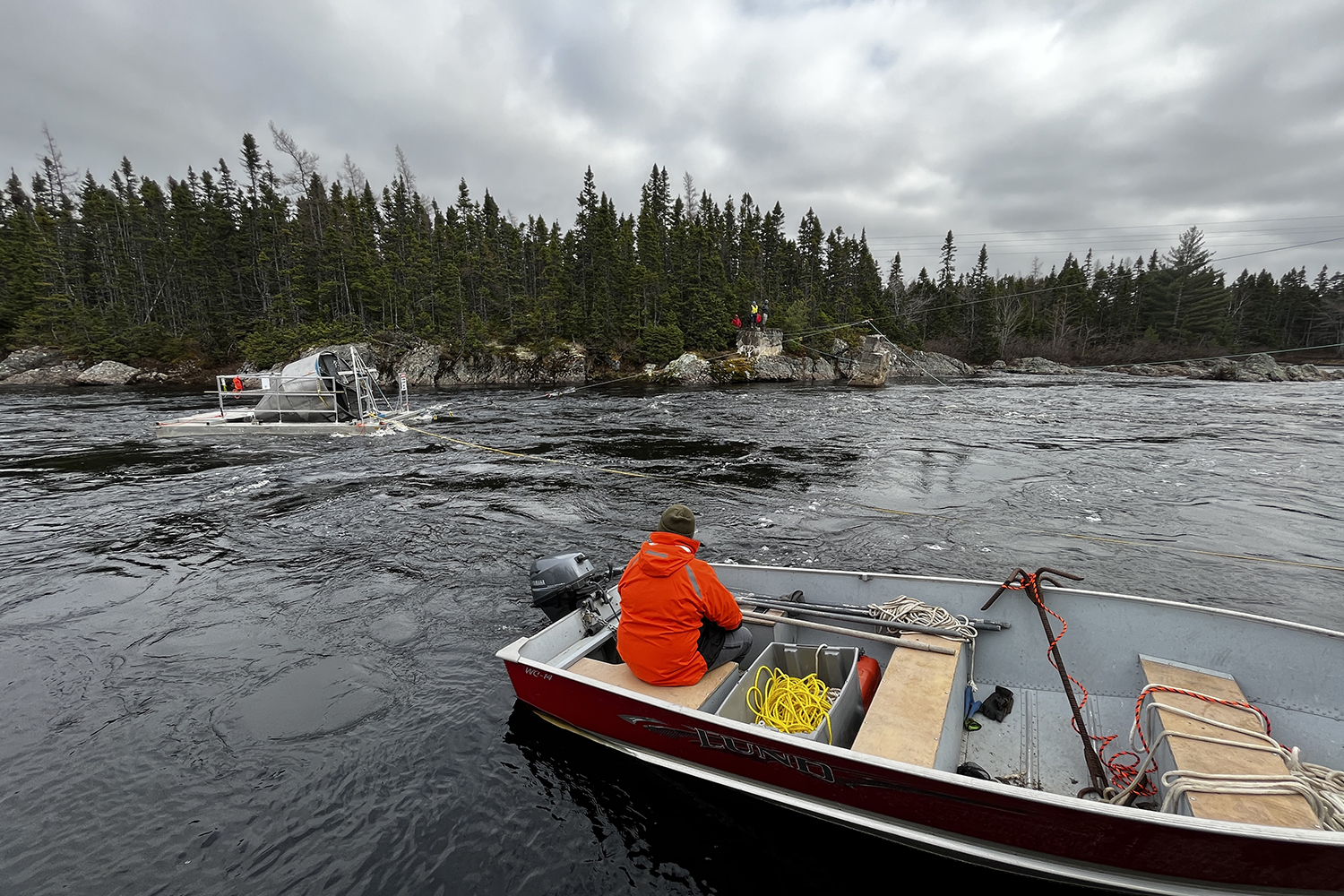
Each spring, Atlantic salmon biologists in Canada gear up for the installation of smolt wheels in rivers – big rotating drums that collect smolts as they travel downstream – offering critical data on salmon migration, river productivity and population health.
When conducted over multiple years, the results from smolt wheels are gathered and modeled against known changes to monitor the effectiveness of conservation and restoration.
Last spring, a smolt wheel was set up for the first time in the Terra Nova River in Newfoundland. John Baird, a project manager with the Freshwater-Alexander Bays Ecosystem Corporation in Glovertown, told the Advocate that it will give scientists a wealth of information to drive their conservation work forward.
“We are an organization of volunteers that has been around since the late 80s,” Baird said. “We embarked on the smolt wheel initiative with the Atlantic Salmon Federation (ASF), while the Department of Fisheries and Oceans Canada (DFO) supports us and helps with salmon assessments and research. We want to determine the health of the smolt population and how to improve and sustain it.”
The smolt wheel initiative is part of ASF’s Wild Salmon Watersheds program, which protects and restores watersheds that are still healthy so that salmon populations can be supported long-term. Once the smolts are guided through the smolt wheel, they are tagged and moved back upstream. Based on the number of recaptured smolts, scientists can estimate the total smolt productivity of the Terra Nova River.
“For every smolt that comes through the smolt wheel, we measure their length and weight, take a scale sample to determine their age and a genetic sample to better understand genetic diversity,” said Kris Hunter, ASF’s regional director for wild salmon watersheds. “Last year we estimated that 29,000 smolts left the Terra Nova River. That’s very encouraging.”
Several smolts are also tagged with acoustic tags, and sensors are deployed in the river and bay to detect the tags and help scientists determine where the fish go and how many return.
“Tagged fish tell us which part of the river salmon are heading for, and how long their migration routes are, while returning tagged fish can tell us how long they were in the ocean and help us determine their survival rates at sea,” said Hunter. “By understanding the smolt population, migration routes and survival rates, we can use salmon to see what is working and what could be improved in the system.”
Although not a huge watershed, the river is home to many tributaries, so another goal of the project is to isolate the most and least productive parts to determine where to focus conservation efforts. Baird and his team believe that this will be beneficial when working to ensure that the river remains productive amidst climate change, which appears to be influencing conditions that are important for salmon health. However, interventions are possible, for example removing obstructions to salmon passage, protecting and enhancing cold water refuge areas, and improving land use and resource management practices.
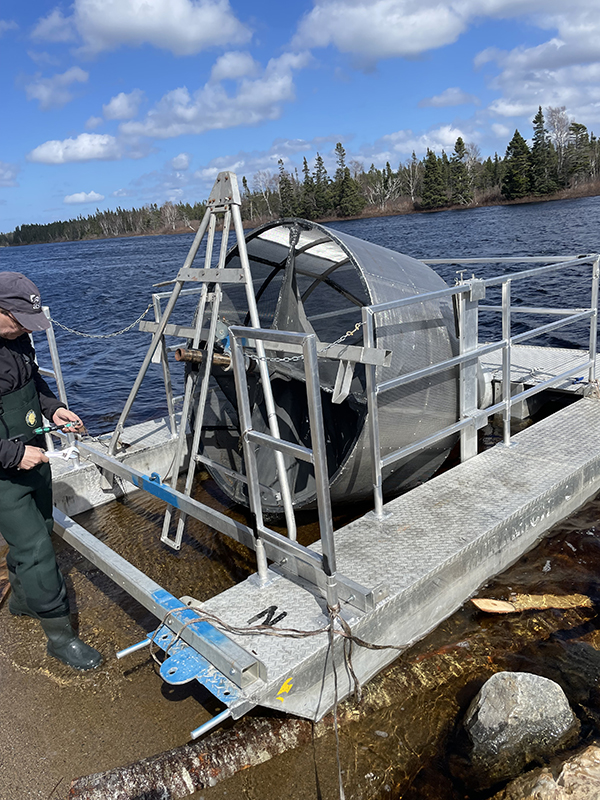
“Climate change is a significant concern,” said Baird. “Over the last three to four years, parts of the river have become very dry, while the water temperature seems to be climbing each year. Meanwhile, land use and forestry are other issues. How do we reduce and mitigate the potential impacts of those threats? That’s our ultimate goal.”
“Identifying important habitats, refuge areas, migration patterns, etc., are all important, while more effort must go into habitat science, field surveys and tapping into local knowledge,” said Hunter. “In fact, this is another important part of the smolt wheel initiative. In addition to collecting information on smolts, we’ll be working with people in the community, finding out what they need, and learning more about the river through them.”
What does a tool like the smolt wheel mean for sectors like aquaculture? In terms of understanding how many smolts go to sea under conditions of enhancement or natural productivity, smolt wheels could be used to estimate mortality at sea as well as the impact of changing environmental conditions, said Cyr Couturier, aquaculture scientist at the Fisheries and Marine Institute of Memorial University in St John’s, Newfoundland.
“Smolt wheels provide an approximation of the health, size and population density of smolts going to sea, and allows for tagging fish to later identify them in returns,” Couturier said. “An example of this use lies in the Fort Folly Salmon Recovery Project in the Inner Bay of Fundy, where salmon smolts going to sea are counted, tagged and some are put in net pens to grow to reproductive size before being returned to the river as spawners. This program has been ongoing with aquaculture for five years or more. Those involved are now seeing greater returns to this critically endangered population of salmon via aquaculture enhancement of wild smolts and by being able to count smolts in smolt wheels. A win-win for all, in terms of restorative aquaculture.”
“A smolt wheel is an extremely effective fisheries assessment tool that has been used in different places for various purposes,” said Hunter. “It can monitor the effects of stock enhancement, look for escapees or disease and shed light on watershed conditions. Information on a wild population, its genetic diversity and how it changes through time or from river to river, is extremely valuable. We need to protect, enhance and monitor our wild populations. In this sense, there is a lot that sectors like aquaculture could glean from the information a smolt wheel provides.”
As the Wild Salmon Watersheds program gets underway in Newfoundland, hopes are high that the lessons learned so far from the smolt wheel will ensure that conservation remains a shared endeavor.
Source:
In Canada, the smolt wheel is proving to be a well-rounded solution for salmon migration and conservation


